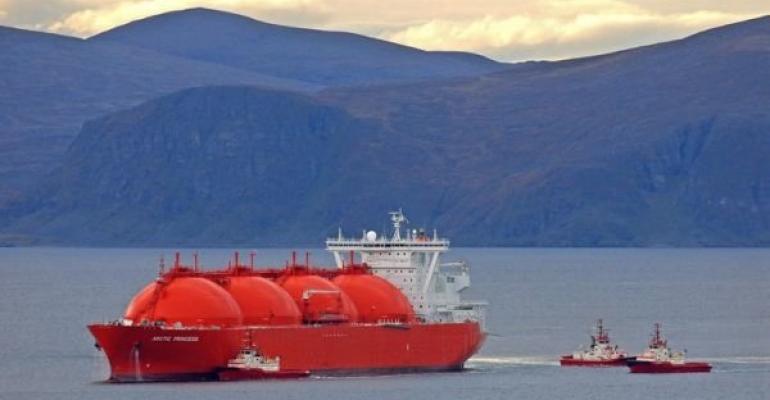“Supported by healthy LNG demand and supply fundamentals and limited vessel availability in the spot market, we expect the LNG freight market in 2019 to remain strong and that trend to continue into 2020,” said Evangelos Dimopoulos, senior LNG analyst at Braemar ACM Shipbroking.
The market, however, has likely peaked for now though the longer term prospects are still promising, according to Court Smith, trade analyst at VesselsValue.
“A warm winter so far in China has depressed some of the immediate demand, and tonne miles have nudged downwards,” Smith noted.
This year the LNG trade is expected to grow by 10% compared to 2017, reaching 320m tonnes by the end of the year, according to Braemar. The rising LNG trade growth in 2018 reflects ongoing infrastructure expansion with a total of 32m tonnes coming online this year mainly in the US, Australia and Russia.
“Growth of LNG trade should remain strong, increasing by a further 8% during 2019 reaching 345m tonnes. Approximately 33m tonnes of liquefaction capacity is expected to come online in 2019. With the destination clause removed from the LNG contracts, meaning that cargoes can be re-routed and re-exported, we expect LNG trade to become more spot based and the LNG market more liquid in the coming years,” Dimopoulos said.
Read more: LNG – Stepping on the gas
For the next three years up until 2021, VesselsValue estimates a total of 91mtpa of new LNG production capacity to start up.
“Out of this, close to 50mtpa of the new production is out of the US, which is expected to increase average sailing distances. On the demand side, shipbroker reports show that the current orderbook for LNG vessels above 100,000 cu m, excluding FSRU and FLNG, counts 93 vessels of which 37 are potentially available for contract,” Smith said.
“However, the LNG production scheduled to start up during the three-year period will most likely require more vessels than the current available tonnage and orderbook during periods of high ton-mile demand,” Smith added.
Braemar data shows that the LNG carrier fleet expanded rapidly in 2018, as 547 vessels with a combined 85m cu m capacity are expected to be on water by the end of the year, representing a 9% growth in carrying capacity.
Dimopoulos said: “Contracting has also picked up during 2018 with 57 newbuild orders taking place, and attracting new players coming into the market. Forty nine vessels are expected to enter the market in 2019 with a combined carrying capacity of 7.8m cu m. Fleet growth is expected to be slightly slower than global liquefaction capacity growth next year. In recent years fleet growth has remained dominated by the largest vessels of 165,000-plus cu m.”
Copyright © 2024. All rights reserved. Seatrade, a trading name of Informa Markets (UK) Limited. Add Seatrade Maritime News to your Google News feed.


